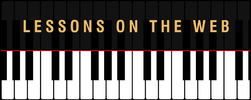|
In the "old" days, people used to have to read maps to travel around the country. Maps were rather large, had small print, and were hard to understand unless you knew what all of the different symbols meant. It's similar when we try to sight read a piece of music for the first time! There's one or more pages of paper in front of us with numerous markings that are letters, numbers, and notes, with funny lines and sometimes little tiny notes as well. Music truly is a language on its own and once you begin to know and understand this language, the sooner you'll be able to pick up a piece of music and easily be able to navigate through all of the notes, lines and symbols the first time you play it; this is exactly what sight reading is. Lay the Foundation First Laying the Foundation just means that you spend time in the beginning learning the basics of reading music and playing the piano.
Once you have these basic elements accomplished, you then want to move into playing scales and finger exercises.
Remember, that to really learn and absorb the language of music, you need to apply yourself as many days out of each week as possible to reinforce what you've learned. This will definitely prepare a solid foundation for you to move into sight reading next. Now let's sight read! OK; you've learned the "basics"... it's time to try your hands at sight reading. What this means, is that you are going to play through a piece of music that you have never played before! Yes, you can do it and here's how! You're already prepared because you know how to decipher all the symbols on the map, or music. If you have any apprehension about this, go back and review whatever you need to, and it's a good idea to do this often anyway.
That is the "basics" of sight reading! The most important things to remember when it comes to sight reading are:
Stay Tuned to LessonsOnTheWeb to learn much more and achieve your dreams of playing the piano! |
AuthorMost blogs written by Archives
June 2020
Categories
All
|


 RSS Feed
RSS Feed